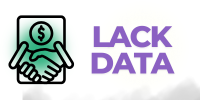In the fast-evolving digital world, businesses Inbound Digital must leverage effective online strategies to stand out, attract customers, and sustain growth. Three of the most powerful tools in this arena are inbound digital marketing, search engine optimization (SEO), and social media. When strategically combined, these elements create a robust ecosystem that drives traffic, builds brand loyalty, and increases conversions.
What is Inbound Digital Marketing?
Inbound digital marketing is a customer-centric approach that focuses on attracting prospects through relevant and valuable content. Unlike traditional outbound marketing, which interrupts potential customers with ads and cold calls, inbound marketing draws them in organically by addressing their needs, pain points, and interests. This is achieved through content like blogs, videos, ebooks, webinars, and email campaigns.
The goal of inbound marketing is to create a meaningful relationship with your audience by providing helpful information, establishing trust, and positioning your brand as an authority in your niche. Over time, this builds loyalty and nurtures leads through the sales funnel.
The Crucial Role of Search Engine Optimization (SEO) Inbound Digital
SEO is the backbone of inbound marketing because it ensures your valuable content is discoverable by the right people at the right time. Search engines like Google use complex algorithms to rank web pages based on relevance, authority, and user experience. SEO involves optimizing your website and content to rank higher in search engine results pages (SERPs).
Key components of SEO include:
Keyword Research: Identifying the terms and phrases telegram data your target audience uses to search for products or services.
On-Page SEO: Optimizing page titles, meta descriptions, headers, images, and content to include targeted keywords.
Technical SEO: Ensuring your website loads quickly, is mobile-friendly, and has a clean, crawlable structure.
Off-Page SEO: Building backlinks from reputable websites to increase domain authority and trustworthiness.
By applying these strategies, businesses can increase organic traffic, attract high-intent visitors, and improve conversion rates.
How Social Media Amplifies Your Marketing Efforts Inbound Digital
Social media platforms such as Facebook, Instagram, LinkedIn, Twitter, and TikTok play a pivotal role in modern digital marketing. Social media is not only a channel for brand awareness but also a key tool for engagement and distribution of inbound content.
Here’s how social media complements inbound marketing and SEO:
Content Promotion: Sharing blogs, videos, and other digitalization grants for smes 2021 resources across social channels expands your reach and drives traffic back to your website.
Audience Engagement: Social media allows for real-time interaction with your audience, fostering community, answering questions, and building trust.
Social Signals and SEO: While social signals (likes, shares, comments) are not direct ranking factors, increased social engagement often leads to more traffic, backlinks, and brand mentions, indirectly boosting SEO.
Targeted Advertising: Social platforms offer advanced targeting options that help businesses promote content and offers to specific demographics, boosting lead generation and conversions.
Integrating Inbound Digital Marketing, SEO, and Social Media
The true power lies in integrating inbound digital marketing, SEO, and social media into a seamless strategy. Here’s how you can create synergy among these elements:
Create High-Quality, SEO-Optimized Content Inbound Digital
Begin by developing content that answers your audience’s questions and solves their problems. Use keyword research to guide your topics and optimize content for search engines.
Promote Content on Social Media
Share your content strategically on social media channels to increase visibility and engagement. Tailor your posts to each platform’s audience and format for maximum impact.
Engage and Listen on Social Platforms
Use social media to interact with your followers, respond to feedback, and build relationships. This engagement can provide insights for future content and product development.
Use analytics tools to monitor website traffic, keyword united kingdom data rankings, and social media engagement. Measure conversions and customer behavior to continuously optimize your inbound marketing efforts.
Higher Engagement: Inbound content and social media foster deeper connections and prolonged engagement.
Cost-Effectiveness: Compared to traditional advertising, inbound marketing offers a lower cost per lead with higher ROI.
Better Customer Insights: Social media interactions and web analytics give valuable data on customer preferences and behavior.
Conclusion
In today’s digital environment, no business can afford to ignore the combined power of inbound digital marketing, search engine optimization, and social media. These strategies, when effectively integrated, create a sustainable marketing funnel that attracts, engages, and converts customers.
